
Bill 15: this ‘blank cheque’ legislation could dramatically change how B.C. approves major projects
Premier David Eby says new legislation won’t degrade environmental protections or Indigenous Rights. Critics warn...
This article was originally published on Capital Daily.
Kelly Jeffrey loves being out on the West Coast Trail when the weather turns stormy: the big waves crashing against the rocks, the sound of the rain falling through the trees, the wind whipping through the coastal vistas.
When a thunderstorm rolled through in early August — a rarity on the West Coast — Jeffrey watched in awe from his vantage point at the Tsuquadra guardian cabin as dark clouds grew and flashes of lightning lit up the roiling ocean. Standing there, he could feel the rumble of the thunder build up in the ground and through his body.
It’s amazing, he said, to witness the beautiful power of mother nature.
The day before the storm, Jeffrey had been busy building new boardwalks in the area. The boardwalks are simple — long pieces of wood raised up on logs, and embellished with a grippy crosshatch pattern chainsawed onto the flat surface — but they do their job well to keep hikers out of the mud. This year in particular, there has been a lot of rain and, therefore, a lot of mud.
Jeffrey is used to wet conditions. As one of the Ditidaht First Nation’s West Coast Trail Guardians, Jeffrey spends seven months of the year working out on the trail in every kind of weather, hauling 60 pounds of gear to cut back encroaching undergrowth, maintain the weathered structures, and remove fallen trees from the paths.
“Most people’s backpacks are less than what my chainsaw weighs,” he laughs.
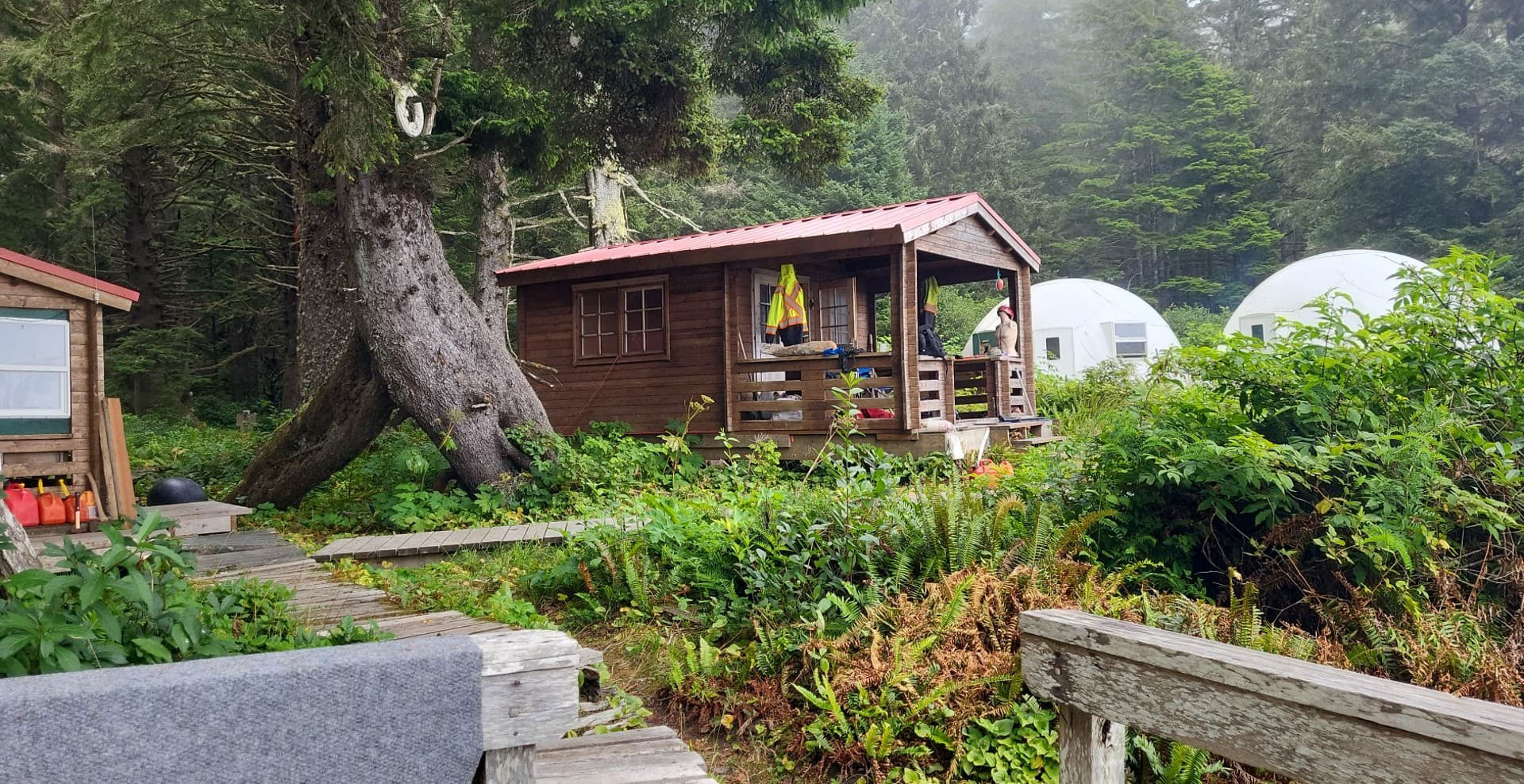
The West Coast Trail runs along a rugged 75-kilometre stretch of coastline between Port Renfrew and Bamfield on the southwest corner of Vancouver Island. It’s one of the world’s most iconic treks, among the likes of Peru’s Inca Trail or Tanzania’s Mount Kilimanjaro, attracting upwards of 7,000 hikers and adventure-seekers from around the world each year.
Throughout the trail’s history, it has been well used by shipwreck survivors, to adventure seekers, to the very peoples who have inhabited this land since time immemorial. Because while the trail is now part of Pacific Rim National Park, it is first and foremost on the territories of the Pacheedaht, Ditidaht, and Huu-ay-aht First Nations.
The guardians — four or five from each nation — are there to help maintain the trail, but more than that, they’re there to protect and share their culture and the history of the land.
As Jeffrey tells me about the work that he’s completed recently — boardwalk building and undergrowth brushing — he intersperses it with stories of the land. At Tsuquadra, where his guardian cabin sits, there are still some remnants of the post and beam homes that were built along the coast. He talks about the food that the Ditidaht people ate and where they would often hunt, fish, and gather seafood. They would make canoes — č̓apacs in the diitiidʔaaʔtx̣ language — out of the giant cedars, and paddle along the shorelines.
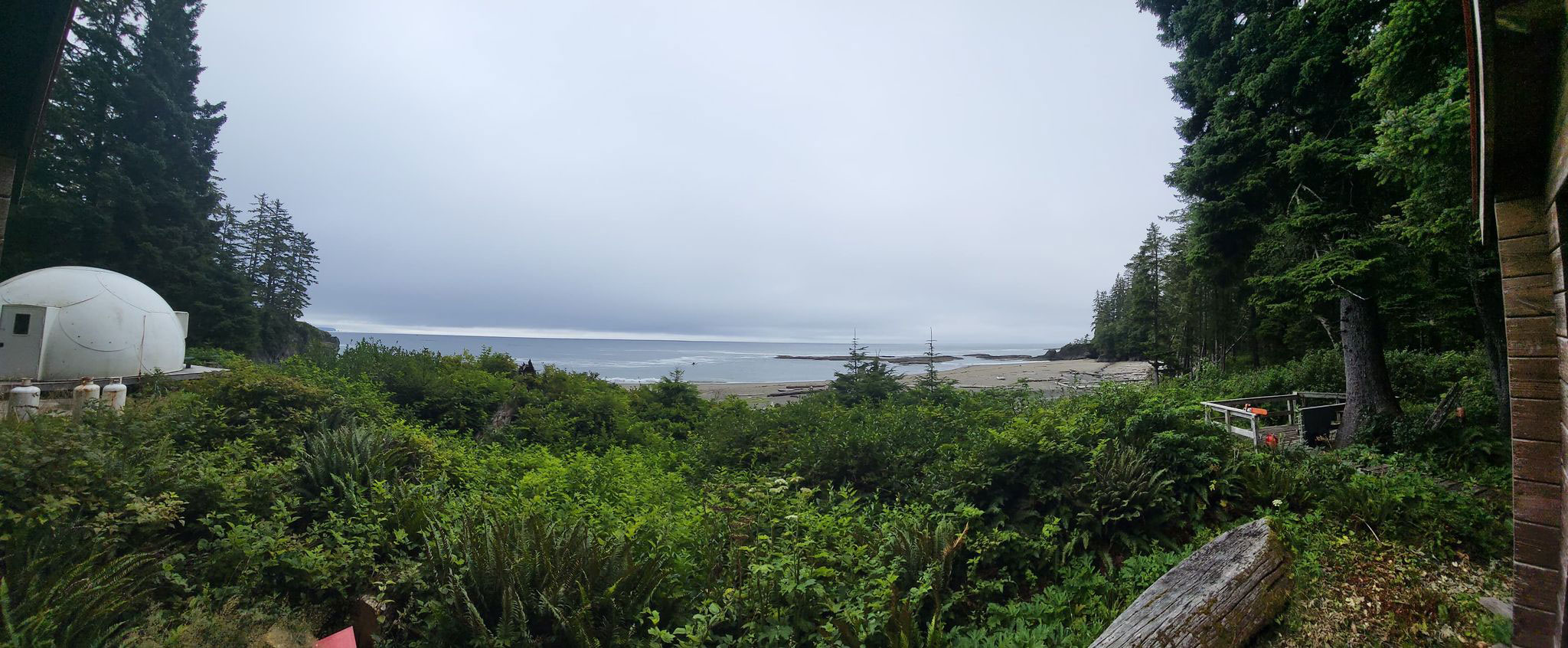
In the ’70s, the land was incorporated by Parks Canada into Pacific Rim National Park without consultation — effectively removing the nations, their history, and culture from the government’s narrative of the trail. As the years went on, this injustice became more apparent. The volume of hikers increased and so did the problems.
Twenty-seven years ago, the situation came to a head. That’s when the guardians started on the trail.
The 75-kilometre, well-travelled trail between Port Renfrew and Bamfield passes through lush forested valleys, sandy beaches bordered by towering sea stacks, coastal boulder fields, and rocky shelves pockmarked by thousands of tidepools. It is a place where adventure-seekers test their endurance on series of towering ladders and while trudging through knee-deep mud or soft, stamina-sucking sand.
The number of hikers that can step onto the trail each day has been capped at 70 to reduce overcrowding and wear on the trail — but even still, the amount of maintenance that’s required of guardians like Jeffrey is astounding.
Storms knock over trees, damage structures, and flood creeks. Thousands of footsteps and seemingly infinite raindrops turn dirt trails into deep, slippery mud pits and cause boardwalks to collapse and ladder rungs to fail.
All this adds up to make a long journey a dangerous one. About one in every 75 hikers is evacuated off the trail because of injury or illness.
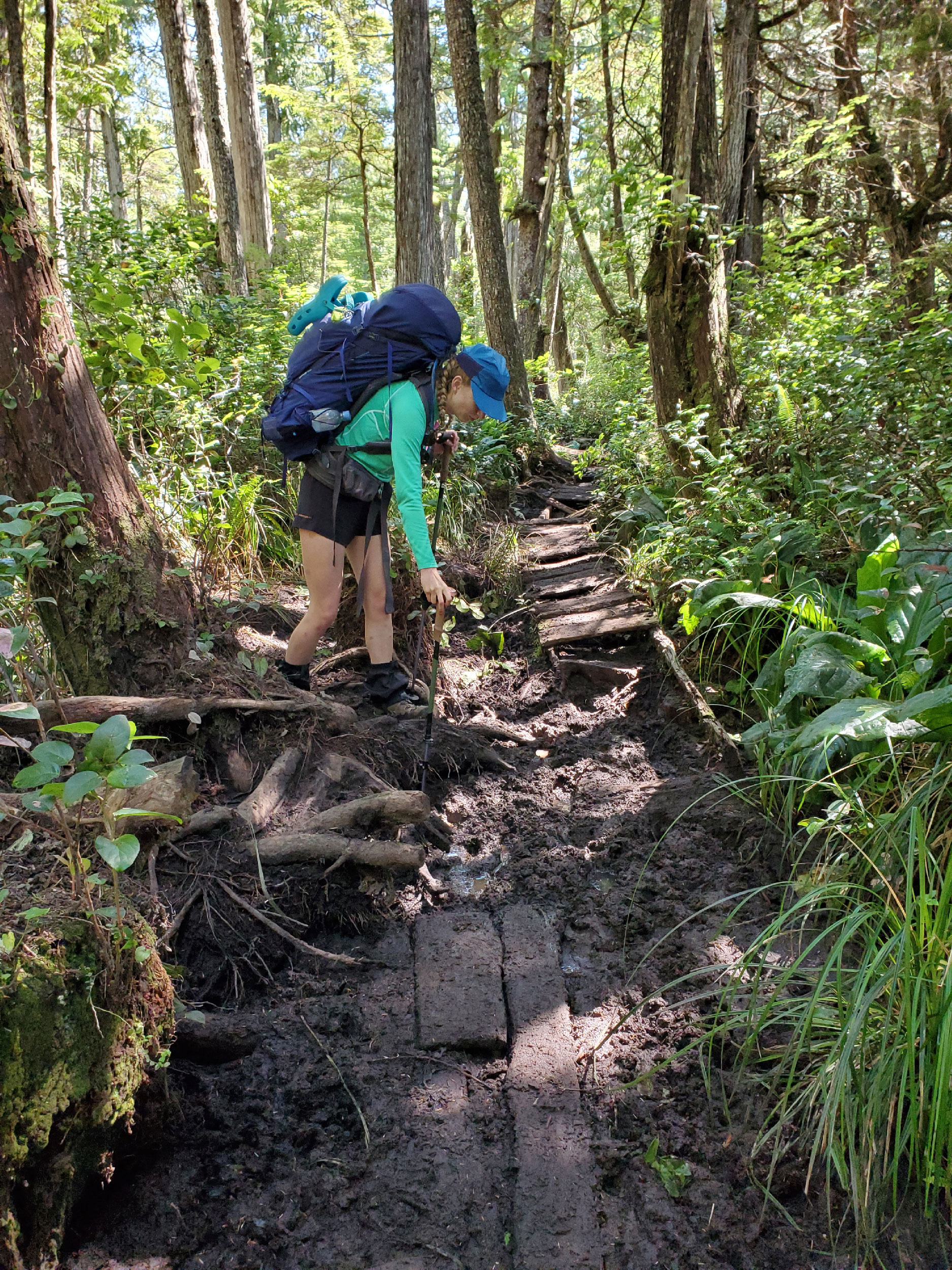
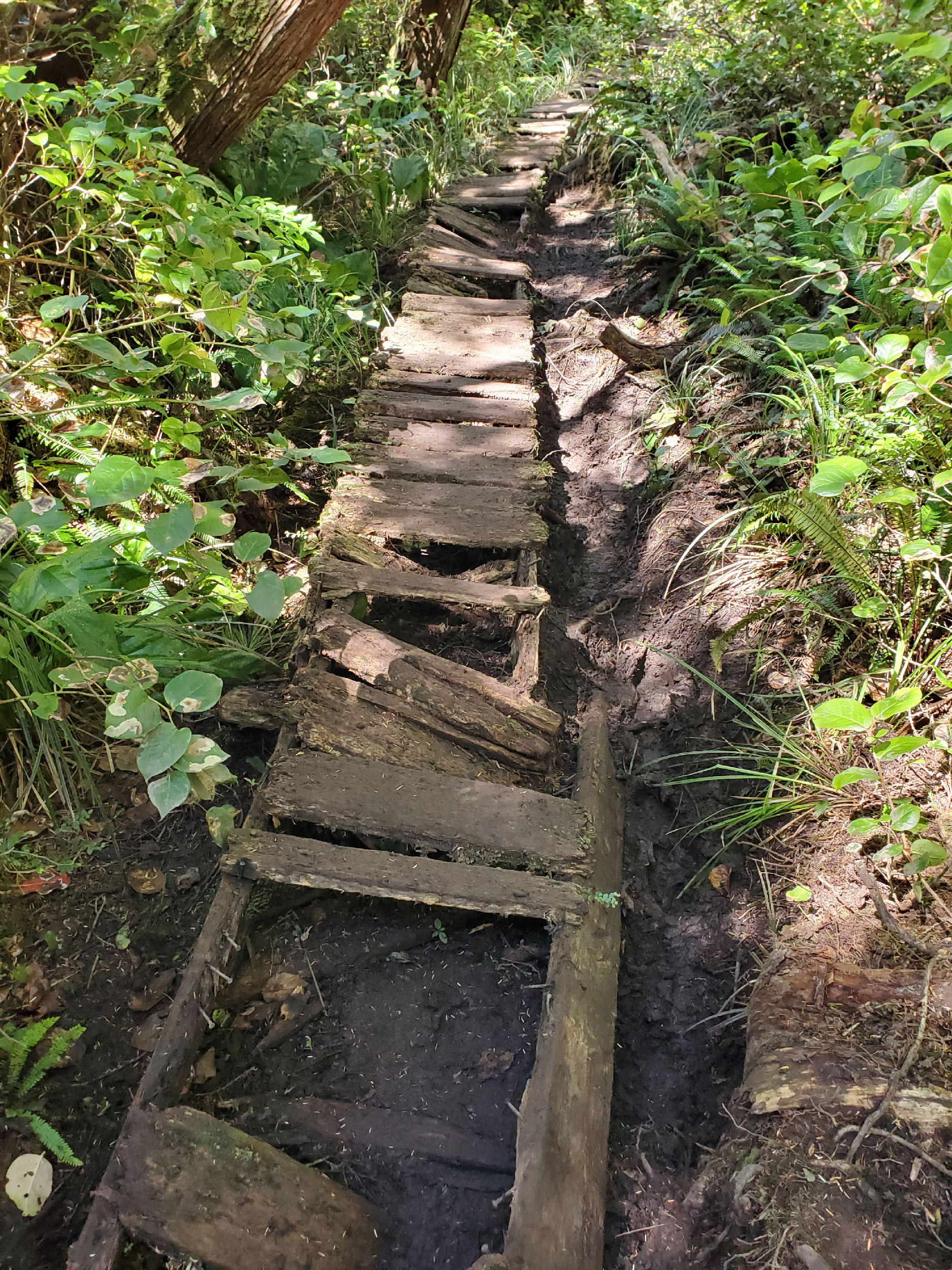
The trail’s beginning, however — a century ago when the conditions were much worse — was as a lifesaving route.
Rusting ship parts still lie on beaches, evidence of the dozens of ships that sank along the coast from the late 1800s to 1900s. At the north end of the so-called Graveyard of the Pacific, unpredictable weather conditions, fog, and dangerous shorelines caused ships to meet their end, forcing thousands to traverse the section of Island coast to find help.
The federal government installed a telegraph line in the 1890s to help with communication along the coast in the hopes of saving mariners’ lives. After the Valencia sank in 1906, leading to the deaths of more than 125 people, public outcry led to the government building a new lighthouse and the life-saving trail itself.
As the years went by and technology reduced the threat of this coastline to ocean vessels, the trail became less about escaping the wilderness for the safety of the city, and more about escaping the city for the wilderness. In 1973, the trail became a part of the newly established Pacific Rim National Park.
This coast has always been a place that brings things together: shipwreck survivors found the help they needed; hikers bond with like-minded trekkers from around the world; West Coast Trailers unplug and connect with their beautiful surroundings. This section of land connected First Nations all along the coast. And now it connects hikers with the story of the land on which they walk.
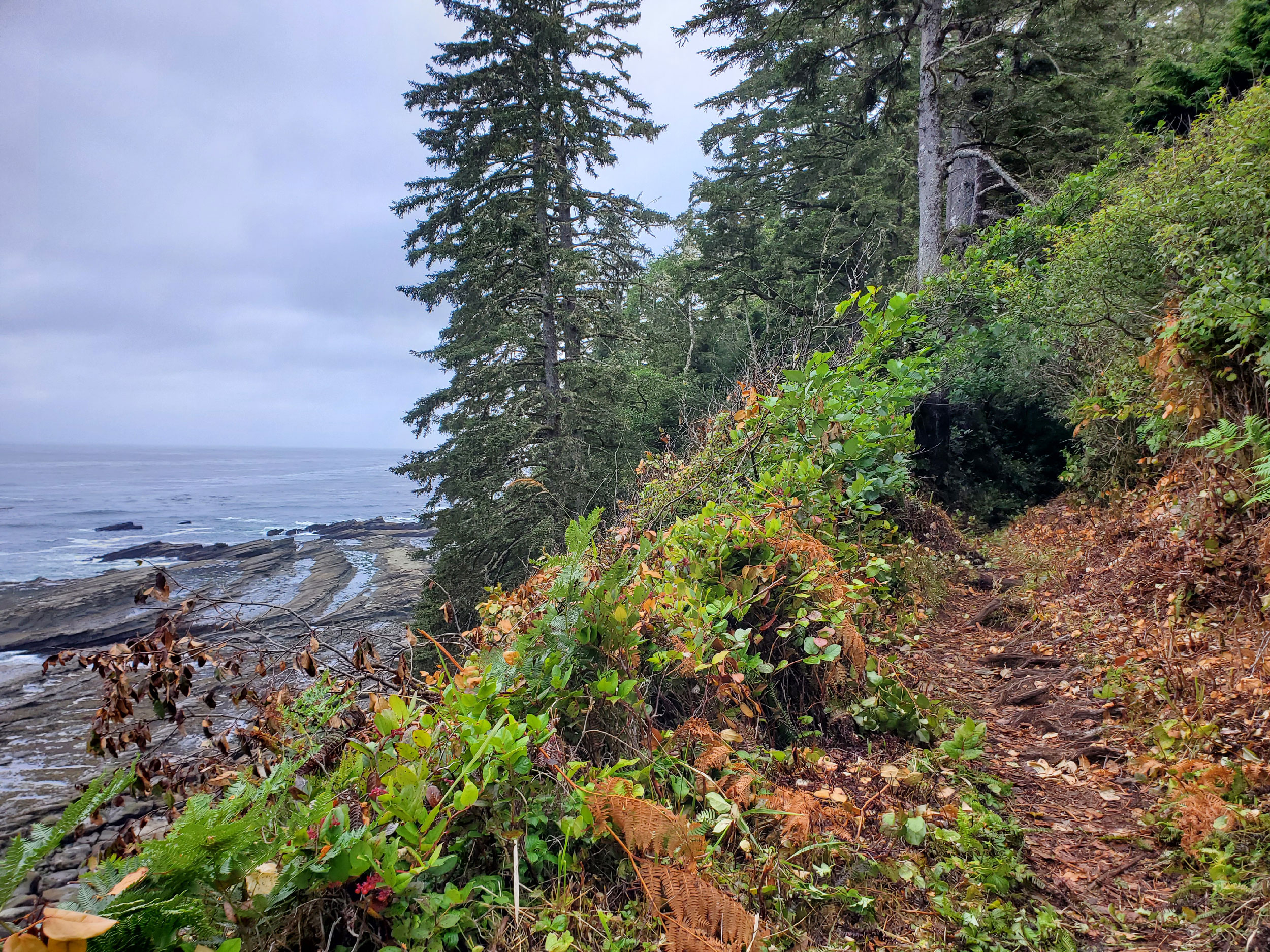
The first time Carl Edgar Jr. saw a hiker on the trail was in June of 1968.
He was a teenager at the time, living at Whyac at the mouth of Nitinaht Narrows in the centre of the trail, when a man he didn’t know appeared out of the trees.
“He was across the Narrows, walking on the beach,” Edgar recalls. “One of the other kids said, ‘There’s somebody over there, and he’s got something on his back.’ ”
They had never seen a backpack like that before.
Edgar isn’t a guardian, but he has lived and worked out on the Narrows for the majority of his life. That wouldn’t be the last hiker he saw; in fact, he built a successful family business centred around the trail.
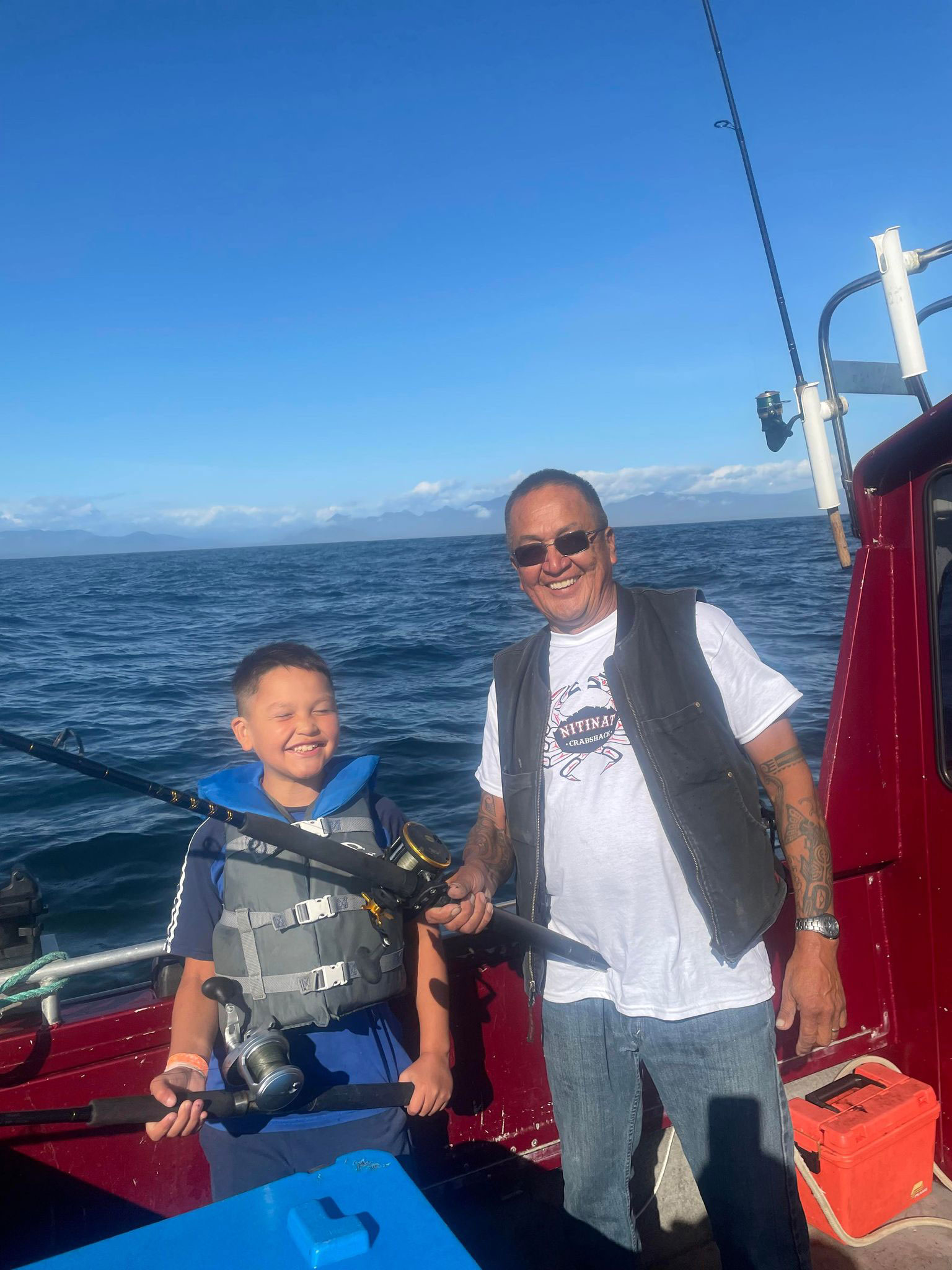
The owner of the famed floating Crab Shack, Edgar and his family have served locally caught crab and fish to hikers passing through since 1999. In recent years, he’s added a few cabins up the hill from the restaurant for hikers to rent out. Through Nitinat Wilderness Charters, Edgar also gives rides across the Narrows and in and out from the third entrance at Nitinaht Lake. Now that his kids are all grown, he and his wife have also opened their home as a bed and breakfast.
It all started in the early ’70s when Edgar would go out onto the Narrows to fish in his dugout canoe with a 20 horsepower Johnson outboard motor attached to the back. As hikers appeared out of the trees, he would give them a ride across the deep, tidal waters to the other side. He’d take no more than two people across at a time — “because everybody thought my canoe was tippy” — and charge them a dollar each for the ride.
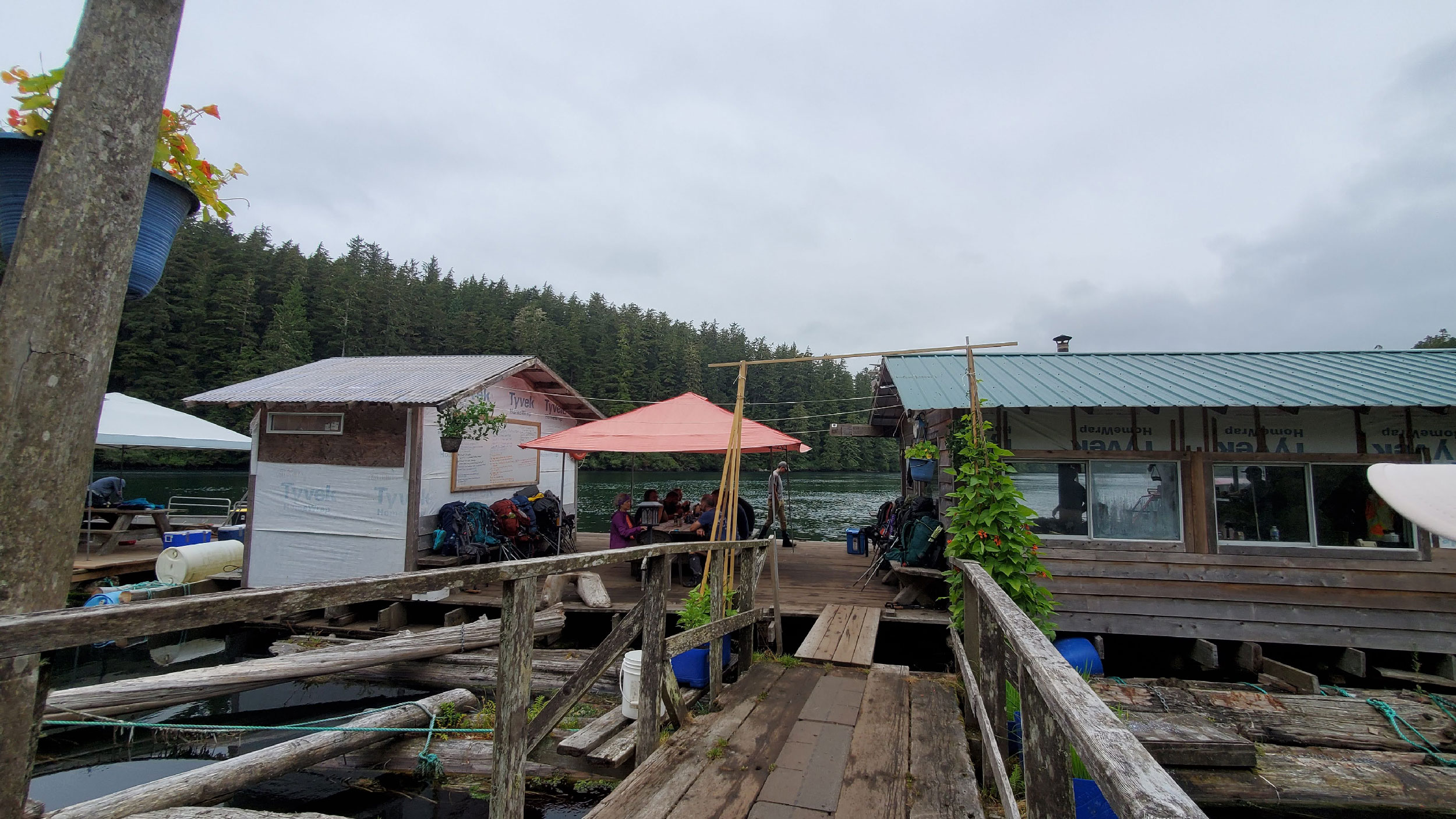
In 1975, Parks Canada began subsidizing him, paying $1,500 each month to cover his expenses and keep costs down for hikers. He eventually graduated to a fiberglass boat, then later an old herring skiff that he modified so hikers could step onto it safely.
“At first it was really rough because there was no regulations and no structure in place. I would just show up and the hikers would say that they’re waiting for a ferry that has no schedule,” he said.
But as hikers began picking up, the lack of regulations became more and more apparent. He would see 100 to 140 people every day at the Narrows, and the volume of hikers began to cause problems with overcrowding at the campsites.
That’s also when the looting started. The hikers would take things from houses in Nitinaht and the nearby villages of Clo-oose and Cheewhat. “People never used to lock their doors; they trusted everybody,” Edgar said. “And then the hikers started coming out and they thought they’re all abandoned, so they used to help themselves and take things.”
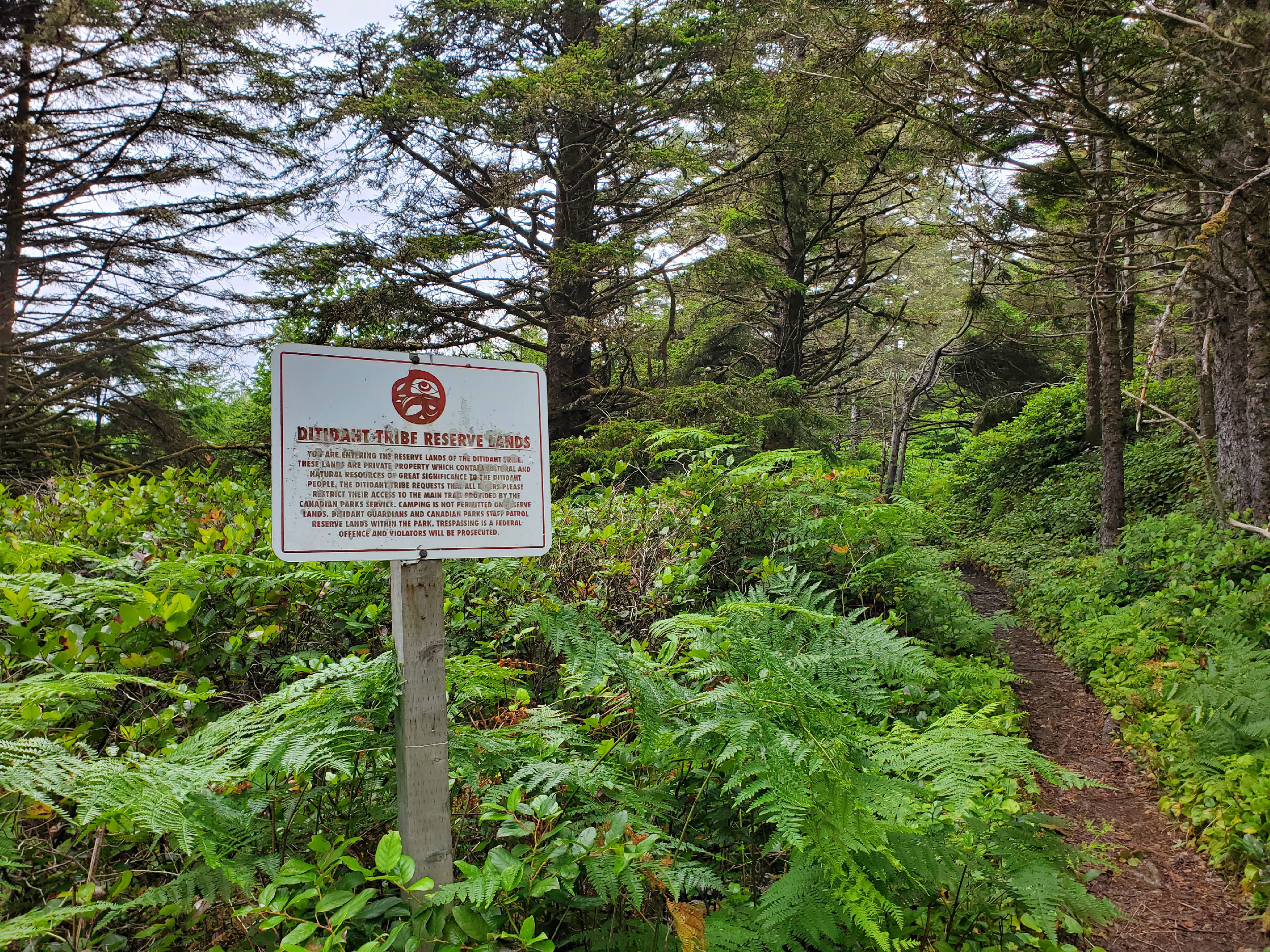
Ancient petroglyphs scratched on the rocks were vandalized with dirty pictures and words. Sacred sites were desecrated.
“They even started taking bones from the burial caves and different artifacts that our people used to bury our people with,” Edgar said. “It troubled me and disturbed me.”
Edgar saw the behaviour firsthand working directly with the hikers. But he was one of the few who knew the extent of the problem.
Edgar, who was on the Ditidaht band council at the time, approached the chiefs and councils of the Pacheedaht, Ditidaht, and Huu-ay-aht First Nations to tell them his concerns and convince them that something needed to be done to protect and manage the land.
“It took two years to convince them because at that time, that’s when they started learning about what’s happening out there, because they were unaware that there was no registration and no fees paid,” he said. “There was just a wide open free-for-all.”
Each nation agreed to take part, and Quu’as (meaning “real people” in the Ditidaht language) West Coast Trail Group was formed in 1995. Modelled after the Haida Gwaii Watchmen program — the first program of its kind in Canada — the guardians from the three nations would work with Parks Canada to protect and maintain the land, while providing cultural interpretation to visitors.
“It’s a partnership; it’s a collaboration,” said Tammy Dorward, First Nations program manager at Pacific Rim National Park Reserve and a member of the Tla-o-qui-aht First Nation. “It’s supporting Parks Canada and supporting Indigenous Peoples, and also ensuring that their rights and these economic opportunities are available to them to be able to work in their homelands and to share their homelands with visitors.”
Edgar is glad that there is a focus on cultural interpretation on the trail. And with the increase in knowledge, Edgar says some of the stolen artifacts and bones have been returned by the families of some of the first hikers to the Ditidaht First Nation.
But in some ways, the damage has already been done. After years of desecration by hikers, the burial caves have been barricaded with steel and cable. No one can enter anymore.
“We don’t tell the public where any of these sacred sites are. Lots of them walk right over the burial caves and they don’t even know they’re there,” Edgar said.
“It’s better that way.”
The guardian program did not have a seamless start: members of the nations were wary of working with Parks Canada. The relationship between the government entity and the nations had not been symbiotic — since the early 1900s when the lifesaving trail was created, to the incorporation of Pacheedaht, Ditidaht, and Huu-ay-aht land into the national park in the ’70s, the federal government had always just taken from the nations.
For decades, the nations received no economic benefit from the increase in hikers — all permit fees went to the federal government. The national park, put in place without consultation, also removed the First Nations’ timber rights.
“This is a historical trespass dating back to the creation of the lifesaving trail,” Robert Botterell told the Nanaimo Daily News in 1998 as the nation waited to negotiate a settlement deal for the use of Huu-ay-aht territory for the park. At that time, the Ditidaht First Nation had already successfully negotiated its own settlement for the use of the land and loss of logging rights.
The guardian program put the nations back into the equation in a tangible way, creating jobs and opportunities — but that didn’t remove decades of hurt. It took some convincing to get people to apply for the guardian positions.
“A lot of our people were still angry with what happened to us and how we were treated by the government organization,” said Wally Samuel Sr., who managed the Quu’as West Coast Trail Society for 10 years starting in 1997. “I let them know, you know, we’re here to work together.”
Likewise, not all Parks Canada staff — who continue to have a role in maintaining the trail today — took kindly to the new guardians on the trail.
“At first there was some animosity between the wardens and our guardians because the wardens thought we were trying to take over their jobs,” Edgar said. “We had to convince them that we just wanted to work together and not take away their responsibilities.”
For the first decade of the program, guardians from each nation received training together, and worked across the entire trail, sharing the common responsibility of taking care of the territories and respecting each other’s cultural heritage.
Samuel, who is from the Ahousaht First Nation, played an integral role in shaping the guardian program, working with the hires, liaising with Parks Canada, and setting up training sessions for the guardians on boating, first aid, and safety. Each guardian was trained in communication in order to share their stories and their connection to the land with the visitors. He also worked on marketing the West Coast Trail, including promoting the Indigenous-owned businesses in the area like the Crab Shack and the Pacheedaht Campground.
In 2007, Quu’as dissolved, and the Pacheedaht, Ditidaht and Huu-ay-aht First Nations each began to hire and manage their own crew of guardians separately to work in their own 25-kilometre sections. Each nation negotiates their own deal with Parks Canada and provides their own training. All 12 or 13 guardians only meet a couple times a year for a pre- and post-season meeting.
While this shift may have started out as divisive and political, Edgar doesn’t see it as such anymore. He says the work is divided more equally this way.
“It’s not political,” he said. “This is business.”
When reached on the phone at his home at the head of Nitinaht Lake in June, Jeffrey had just returned from four days out on the trail. It had been a wet spring, so the underbrush was growing thick and fast. He and his crewmate had been working to beat back the salal and salmon berry bushes that were creeping into the forested trail. At the rate things were growing, he expected to have to return to these sections and do another round of brushing in a few months.
Jeffrey works four days on, three days off with one other guardian from the Ditidaht Nation. On Sundays, he’ll take a boat out across Nitinaht Lake, then hike out to the small one-room wooden cabin where he stays while out on the trail. It has a couple of bunks and a propane stove, but it’s quite comfortable out there, he says.
He enjoys the physical work, but for him, the biggest joy of the job is simply being out on the land and talking with the hikers who pass by. He introduces himself, shares where he’s from, and tells them about his culture, the history of the trail, and the peoples who lived on the land long before the first settlers arrived.
“I feel more alive being out there,” Jeffrey said. “I feel more of a connection to my people and myself on the land than I do when I’m here up at the village. It’s where my mother, my grandparents lived. It’s a part of my history and my culture. It’s a part of my being.”
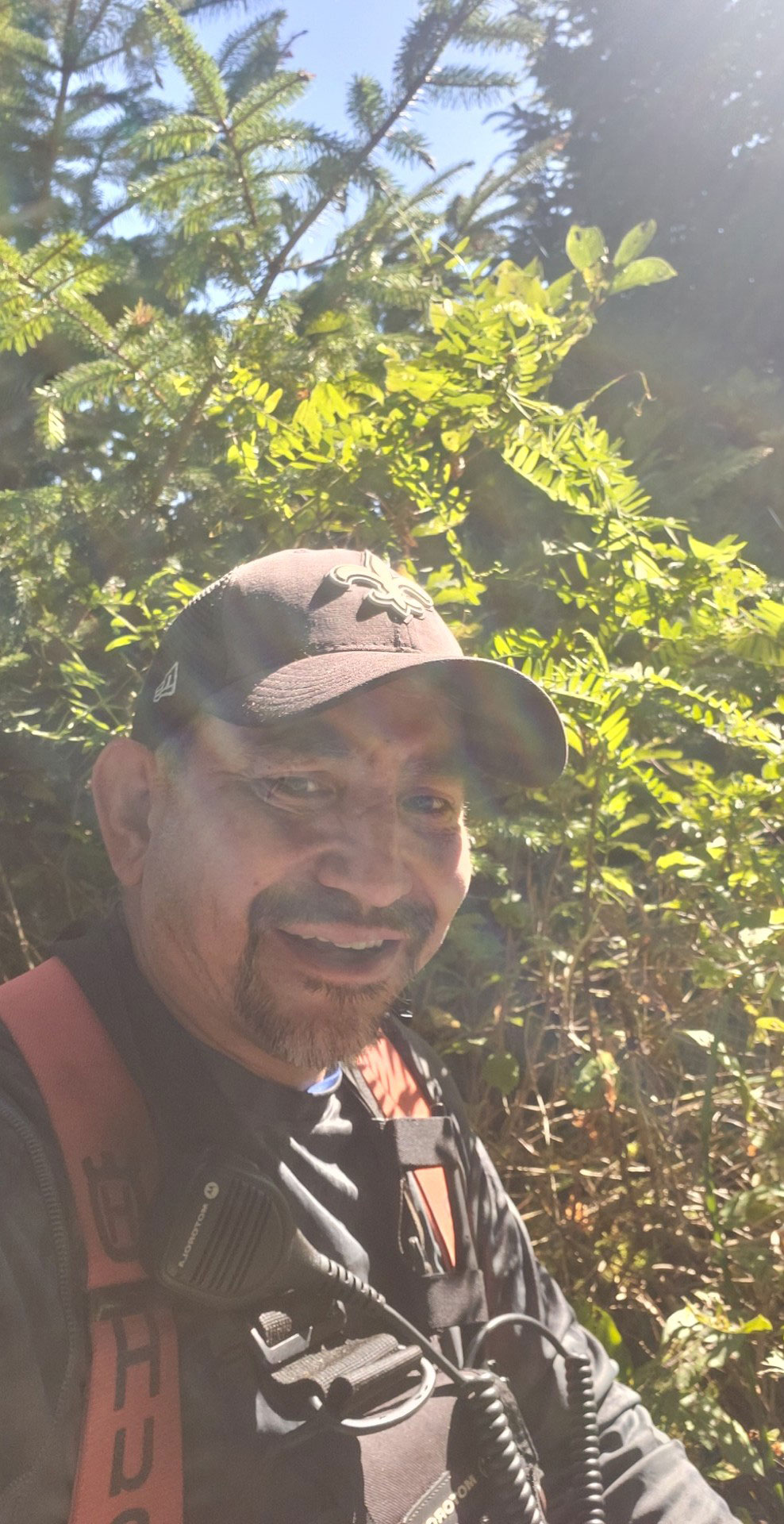
Jeffrey knows practically every inch of the 25-kilometre section of trail in which he works. He regularly walks upwards of 20 kilometres in a day — carrying more weight than the average hiker. Sometimes at the end of the day, he’ll add on another few kilometres to hike out to one of the campsites and sit with the backpackers
“I love it all out there,” he said. “Being on different parts of different beaches, thinking of the different fishing areas and what [my ancestors] would do.”
This is an area that holds a lot of meaning to him. His mother grew up in Clo-oose, a small Ditidaht village that sat just south of the mouth of the Nitinaht Narrows. That’s where Edgar lived for five years of his youth as well. He remembers eight post-and-beam houses tucked into the trees, one of which he lived in with his five brothers and four sisters.
Growing up, they lived freely on the land. At five years old, Edgar and the other children would hike the nine kilometres southeast to Carmanah Point where they would explore and gather shellfish and urchins from the tide pools.
“We still say today, ‘When the tide is out, our table is set,’ ” he said. “That’s what we lived on as little kids.”
Along with fishing and hunting, the coastal nations were also whalers, Jeffrey said. The hunters would harpoon the whale, and use sealskin floats to slow it down and weaken it as it swam. Once the whale was killed, one man would jump into the water to sew the whale’s mouth shut to prevent it from sinking as they towed it to shore.
“After it was done, they would bring it to shore and get it ready and they would celebrate, have a big celebration — a big feast. The hereditary chief would get the first piece,” Jeffrey said.
There hasn’t been a whale hunt on this coast in decades, but the legacy still lives on.
A few weeks ago, Jeffrey brought his 17-year-old and 10-year-old sons with him out onto the trail. He said it was amazing to show them the work that he does, and the land that has such meaning to their family.
Kevin Peters, from the Huu-ay-aht Nation, has worked as a guardian on the trail for 23 years, ever since he finished high school. I met him at the end of my own trek at the beginning of August. As I walked towards the end point at the Pacheena Bay Parks Canada office — five kilometres south of Bamfield — I was greeted by a picnic table covered in tinfoil, lemons and salmon. Soon, a truck pulled up with three men squished into the small cab. They unloaded a barbeque and set it next to the picnic table.
The salmon is free for anyone who wanders into Pacheena Bay on Thursdays, Peters explained, as he fired up the grill. Usually they would cook the salmon the traditional way, he added, if it weren’t for the fire ban.
Soon enough the smell of cooked salmon permeated the air, and Peters started handing out plates to the growing group. “Sharing is caring,” he said.
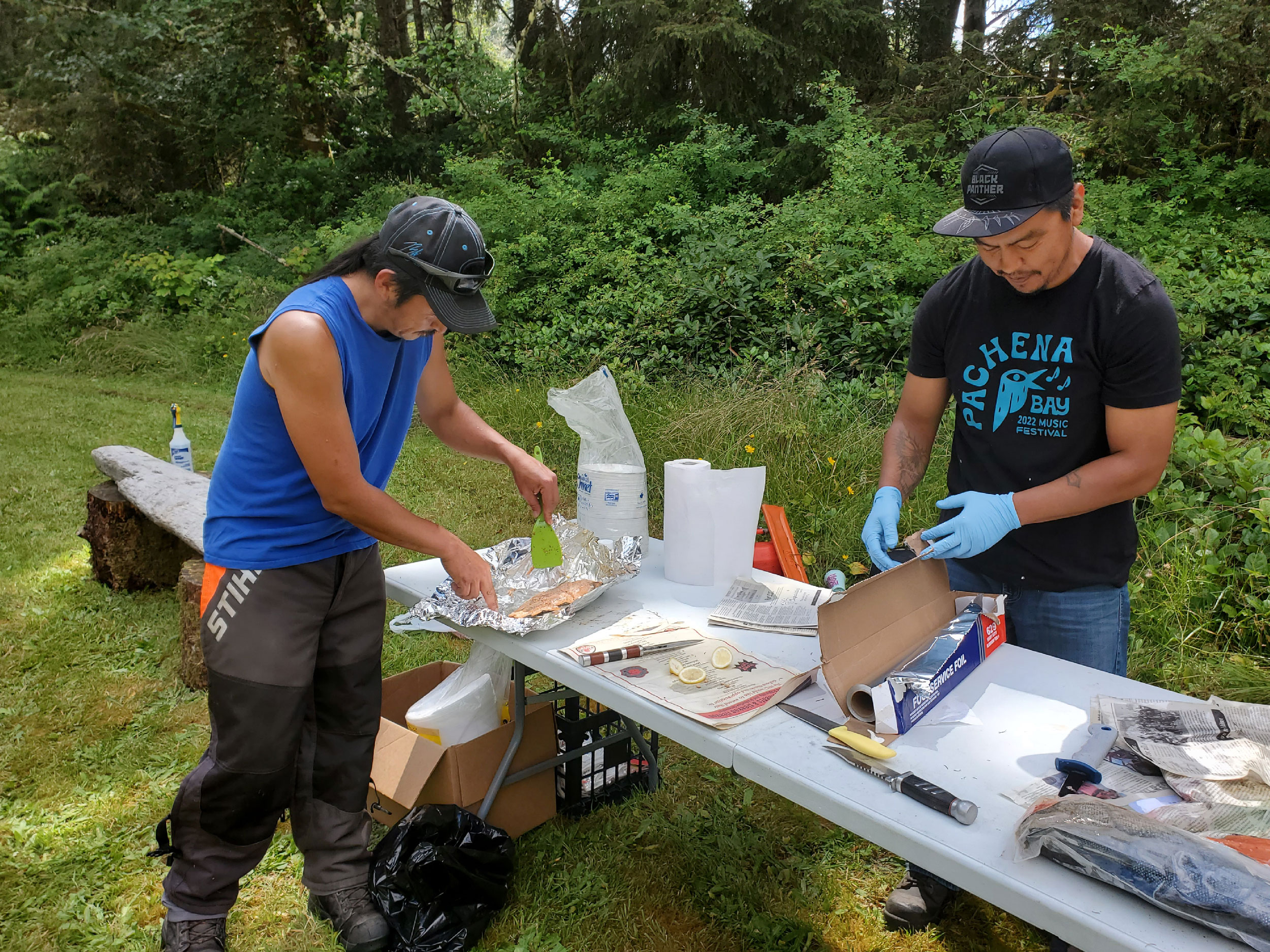
As we ate, a woman at the table cut up a devil’s club stalk with a saw, sanding the light wood and poking a hole through the soft core. The beads will protect us from evil spirits, she told us, adding the plant is highly medicinal and can be turned into tea.
This is the first year the guardians have done these salmon cook outs; Peters loves sharing the fish with the people who find themselves at Pacheena Bay. He hopes they’ll do it again next year.

Dorward, with Parks Canada, says that many hikers who finish the trail specifically comment on how much the experience of speaking with a guardian meant to them.
“They always talk about that as being the most memorable part of the trip and the most profound, the most impactful,” she said. “It’s that connection that the guardians bring, that experience that they bring in sharing their traditional territory and their cultures with visitors from around the world.”
Peters has seen the trail change over the years as it has become worn down and new structures have been built. He’s become quite handy with a chainsaw too. On the north side, the boardwalks that Peters has built are embellished with carved fish, whales and eagles. The structures he creates are not just utilitarian; he has infused them with part of who he is.
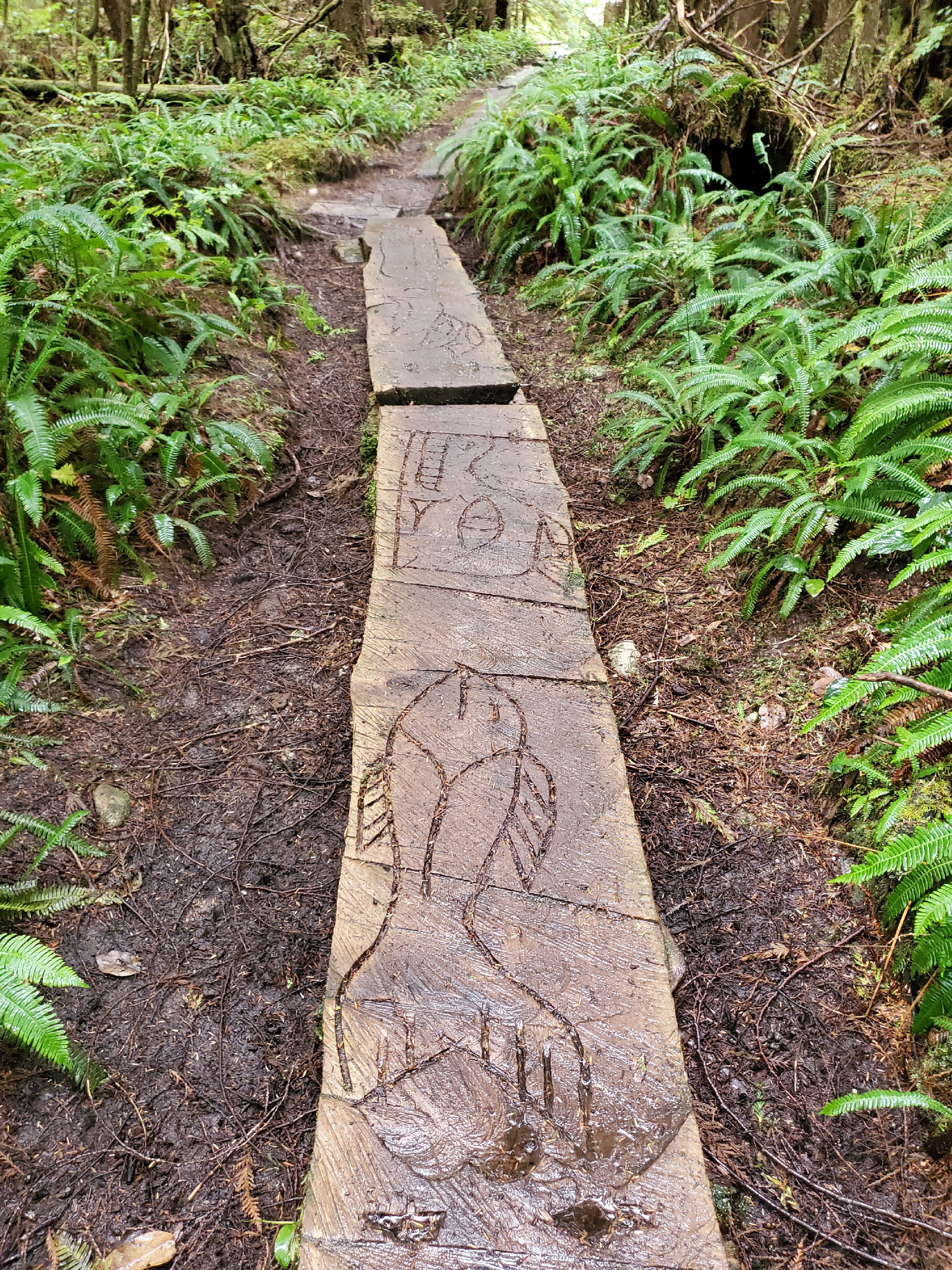
Injuries don’t really faze him anymore. The worst injury he has had to deal with was a hiker who broke their arm so badly that the bone was nearly poking through the skin. He was younger then — everything else seems fairly routine after that.
He has saved hikers from drowning when routine river crossings turn potentially life-threatening after a torrential rain. A few times he has let hikers sleep on the floor of his cabin when ceaseless west coast rains make for a tough trek. He knows where the bears are likely to be at different times of year, which waterways have fish and how long it takes for a river in flood to die down.
For Peters, being out on the trail is about connecting with the land, connecting with people and helping them in his quiet way.
This year, he’s joined on the trail by a new crewmate: his neighbour, Joseph Jules, who he has known for years. Peters has taken to showing his new crewmate the ropes, and throughout the season has been bringing Jules to the hidden places he has found over his two decades working on the West Coast Trail. Some are places that have particular significance to the Huu-ay-aht Nations, others — like a hidden cave only accessible by crawling through a narrow tunnel — are just plain cool.
Peters knows every kilometre of this third of the trail; it’s one of the places where he feels most at home. And now he has someone new to share it with all over again.
“Alright, we’re done work,” he’ll say. “Let’s have a quick dinner then go explore some stuff.”
Get the inside scoop on The Narwhal’s environment and climate reporting by signing up for our free newsletter. On a warm September evening nearly 15...
Continue reading
Premier David Eby says new legislation won’t degrade environmental protections or Indigenous Rights. Critics warn...

Between a fresh take on engagement and our new life on video, our team is...

The public has a few days left to comment on Doug Ford’s omnibus development bill....
